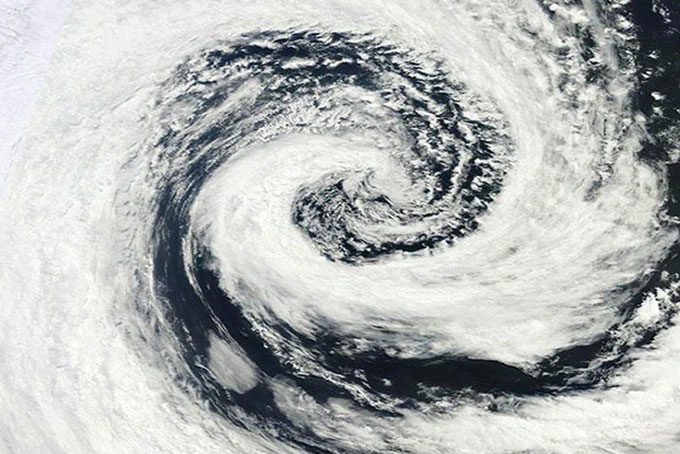The Southern Hemisphere experiences approximately 24% more storms compared to the Northern Hemisphere for various reasons that remain partially unexplained.
A recent study focused on different types of storms and found that the height of mountain ranges and the energy circulation patterns over the oceans are the two main factors influencing storm formation in both hemispheres.
To arrive at these conclusions, a research team from the University of Chicago and the University of Washington in the United States conducted a series of climate models to examine how changing factors such as topography and ocean currents impact the number of storms that form.

A tropical superstorm appeared off the coast of Australia in 2012. (Photo: NASA).
Climate scientist Tiffany Shaw from the University of Chicago stated, “Since we can’t put Earth in a jar, we have to use climate models based on physical laws and conduct experiments to test our hypotheses.”
In each experiment, scientists altered a component of the climate models. When they “flattened” the land masses in the Northern and Southern Hemispheres, they observed that the difference (in the number of storms) decreased by half between the two hemispheres. They then “braked” the primary circulation of global ocean currents. Along with leveling the mountains, the energy reduction due to braking the currents resulted in equal storm levels between the two hemispheres.
Additionally, satellite observations have shown that the frequency of storms in the Southern Hemisphere has been increasing since the 1980s, while there has been almost no change in the Northern Hemisphere. This is likely due to changes in atmospheric and ocean temperatures. These changes are occurring worldwide, but in the North, the relatively stable storms are balanced by melting ice and snow, which increase sunlight absorption against rising temperatures.
The research report states, “Forecasts indicate that the Southern Hemisphere will experience more storms, while the Northern Hemisphere remains relatively unchanged due to the opposing effects of climate change in tropical and polar regions.“
It has been only since World War II that scientists have paid significant attention to climate and weather changes globally, although sailors have recognized the differences between the two hemispheres for a long time.
With the advent of satellite imaging technology in the 1980s, researchers have been able to gather extensive new information about weather conditions to map and monitor changes year by year.
The new findings from this research will be integrated into climate change models to help us better understand how global warming will affect storms and weather patterns in both hemispheres and which changes are most significant.
Researchers believe that by establishing this foundational knowledge, we can forecast climate change more accurately and, in turn, help people better prepare for the impacts of climate change.





















































